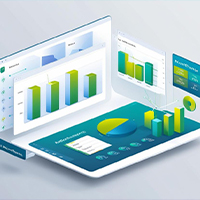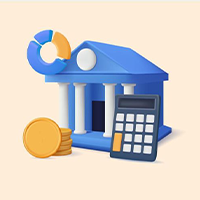
How to Secure Your Lending Platform Against Cyber Threats
The rise of digital lending platforms has transformed the financial sector, making credit more accessible and transactions more efficient. However, as financial institutions increasingly rely on digital platforms, cyber threats have also grown significantly. Protecting your lending platform against cyber risks is critical to ensuring operational stability, safeguarding customer data, and maintaining regulatory compliance.
In this blog, we will explore the most common cyber threats faced by lending platforms and discuss best practices for securing your system. Additionally, we will highlight how Microfinance Software and Microfinance Software Tools can enhance security while ensuring smooth loan management processes.
Common Cyber Threats in Digital Lending Platforms
1. Phishing Attacks
Phishing is one of the most common cybersecurity threats, where attackers use fake emails or websites to trick users into providing sensitive information such as login credentials or financial data. If a lender falls for such an attack, unauthorized access to the system can compromise vast amounts of critical financial information.
2. Ransomware and Malware
Ransomware attacks lock users out of their systems until a ransom is paid. Lending platforms store vast amounts of financial data, making them prime targets for hackers deploying malware. Without strong cybersecurity measures, businesses can face massive operational losses.
3. Data Breaches and Identity Theft
Financial institutions handle sensitive personal data, including customer identity proofs, bank details, and credit histories. Cybercriminals target weakly secured systems to steal this data, leading to identity theft and fraud.
4. DDoS (Distributed Denial of Service) Attacks
DDoS attacks flood a lending platform with excessive traffic, rendering it unavailable for legitimate users. This can lead to service downtime, disrupting loan disbursements and repayments.
5. Insider Threats
Internal employees or third-party vendors with access to a lending platform may misuse data, whether intentionally or due to negligence. This can result in fraud, unauthorized transactions, or leaked customer data.
Also, check your article: How Secure Is Your Financial Data with Microfinance Software
Best Practices to Secure Your Lending Platform
1. Implement Strong Authentication and Access Control
Using multi-factor authentication (MFA) ensures that only authorized users can access the lending platform. Additionally, lenders should implement role-based access control (RBAC) to limit data exposure to only those who need it.
2. Encrypt Sensitive Data
Encryption converts sensitive data into an unreadable format, making it inaccessible to hackers even if they gain access to the system. Both Microfinance Software and Microfinance Software Tools incorporate encryption methods to protect customer data from breaches.
3. Regular Security Audits and Compliance Checks
Conducting periodic security audits helps identify vulnerabilities before they can be exploited. Compliance with industry regulations such as GDPR and PCI-DSS is essential to ensure robust security measures are in place.
4. Secure APIs and Third-Party Integrations
Lending platforms often integrate with third-party applications for credit scoring, KYC verification, and payment processing. Ensuring that APIs (Application Programming Interfaces) are secure can prevent unauthorized access to the system.
5. Monitor System Activity in Real Time
Using AI-driven security tools, lenders can monitor transactions and system activity in real-time to detect and mitigate suspicious behavior immediately.
6. Implement Secure Cloud-Based Solutions
Cloud-based Microfinance Software provides an extra layer of security by offering automatic backups, encryption, and real-time threat monitoring. Many cloud providers have dedicated security teams to prevent cyberattacks.
7. Educate Employees and Customers
Human error is a leading cause of cybersecurity incidents. Regular training for employees and customers on identifying phishing attempts and using strong passwords can reduce cyber threats significantly.
8. Deploy Firewalls and Intrusion Detection Systems
Firewalls act as barriers between the internal network and potential threats, while intrusion detection systems (IDS) help identify and respond to cyberattacks in real time.
9. Implement Automated Fraud Detection
Advanced Microfinance Software Tools use machine learning algorithms to detect fraud patterns, reducing risks associated with fraudulent loan applications and identity theft.
10. Develop a Cybersecurity Incident Response Plan
Despite preventive measures, cyber incidents can still occur. Having a well-defined response plan ensures quick recovery, minimal damage, and adherence to regulatory reporting guidelines.
Also, read our article: Factors To Be Considered Before Choosing A Loan Management System
How Gtech Web Solutions PVT. LTD. Enhances Cybersecurity for Lenders
With the increasing complexity of cyber threats, lending institutions need advanced technological solutions to safeguard their operations. Gtech Web Solutions PVT. LTD. provides industry-leading Microfinance Software with robust security features such as:
- Data Encryption & Secure Cloud Storage
- Multi-Factor Authentication & User Access Control
- AI-Driven Fraud Detection & Real-Time Monitoring
- Regulatory Compliance Management & Automated Audits
Final Thoughts
Cybersecurity is not an option but a necessity for modern lending platforms. By implementing best security practices and using advanced Microfinance Software, lenders can safeguard their platforms against cyber threats. Investing in Microfinance Software Tools from trusted providers like Gtech Web Solutions PVT. LTD. ensures that lending institutions operate securely while maximizing efficiency.
Secure your lending platform today and build a resilient, future-ready financial institution.
Would you like to explore more about secure lending software solutions? Contact Gtech Web Solutions PVT. LTD. for expert guidance and the best Microfinance Software for your business needs.


